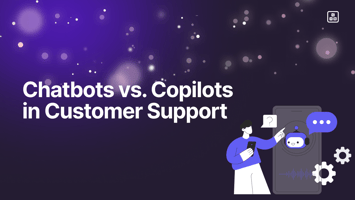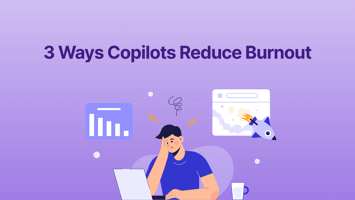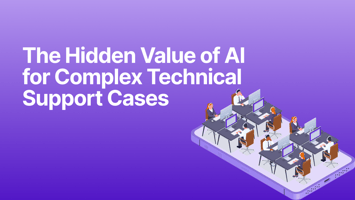When most teams think about AI in customer service, they think chatbots. Chatbots promise instant...
AI Buying Guide: How to Choose the Right AI for Customer Support

The market for AI customer support tools has exploded. From chatbots to copilots to full customer experience platforms, every vendor promises faster resolution times, lower costs, and better CX. But with so much noise, how do you separate hype from ROI?
That’s the purpose of our AI Buyer's Guide: to give customer support leaders a framework for evaluating solutions with clarity, confidence, and measurable results.
Why Buying AI for Customer Support Is Complex
Unlike other SaaS products, AI isn’t a single “plug and play” tool. It’s a capability embedded across many different solutions - from chatbots for self-service deflection to AI copilots that live inside agent workflows.
That variety creates challenges:
- Should you start with a chatbot, invest in a copilot, or adopt a broader AI CX platform?
- How do you measure ROI when AI promises productivity but doesn’t always reduce ticket volume?
- What costs matter most: upfront setup, ongoing maintenance, or long-term scaling?
Without a clear AI buying approach, teams risk under-investing in basic tools that frustrate customers or over-investing in platforms that never get adopted.
Five Steps to Smarter AI Buying
Our AI Buyer’s Guide outlines a five-step framework to evaluate AI in customer service:
1️⃣ Define your problem and KPIs
Start with business outcomes, not vendor promises. Common metrics include average handle time, CSAT, escalation rate, and cost per resolution.
2️⃣ Map your unique criteria
Consider technical fit (security, integrations, compliance) and organizational needs like human-in-the-loop requirements.
3️⃣ Weigh solution tradeoffs
Compare chatbots vs copilots vs platforms. Each excels in different areas: chatbots handle FAQs, copilots empower agents, platforms unify workflows.
4️⃣ Gauge the true cost of ownership
Look beyond license fees. Factor in implementation, training, scaling, and ongoing maintenance. Total cost of ownership (TCO) is often 2-3x the sticker price.
5️⃣ De-risk your decision
Pilot with clear success metrics. Start small, prove value, and then scale AI adoption across your customer support organization.
What’s at Stake for Support Leaders
The wrong AI investment doesn’t just waste budget - it can harm customer trust and burn out your agents. The right investment, on the other hand:
-
Reduces average handle time
-
Prevents unnecessary escalations
-
Improves agent productivity and morale
- Creates measurable ROI for leadership
In short, the future of AI in customer experience isn’t just about deflection. It’s about enablement - helping humans deliver faster, smarter, and more empathetic support.
Key Takeaway
AI in customer support isn’t a shiny toy. It’s a strategic investment that requires a framework, clear KPIs, and an understanding of tradeoffs.
The AI Buyer’s Guide 2025 was built to help leaders cut through the noise, evaluate options objectively, and make confident AI decisions. Download the full guide HERE.
What is the difference between chatbots and copilots in customer support?
Chatbots are designed for AI deflection - handling FAQs, simple requests, and reducing inbound volume. Copilots, on the other hand, are built for agent assist. They live inside agent workflows, surfacing context, suggesting responses, and automating tasks so teams can resolve complex cases faster and more accurately.
What’s the difference between chatbots and AI copilots?
Chatbots focus on AI deflection - handling FAQs and reducing ticket volume. AI copilots assist agents in real time by surfacing context, automating tasks, and improving resolution quality for complex cases.
How should companies measure ROI on AI in customer service?
Key metrics include average handle time, CSAT, escalation rate, cost per resolution, and agent productivity. The right framework helps calculate ROI while avoiding wasted spend on tools that don’t get adopted.


